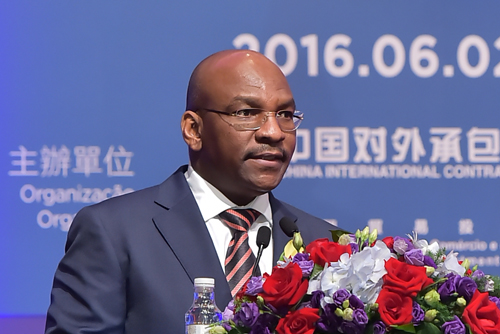|
Getting your Trinity Audio player ready…
|
With concerted efforts from all stakeholders Zimbabwe can achieve its vision of becoming an upper-middle income economy by 2030, despite the challenges it faces, according to African Export-Import Bank vice-president Denys Denya.
“We can succeed in spite of the prevailing headwinds and challenges we currently face, be it climate change, geopolitics, insecurity in parts of our continent or global supply chains disruptions,” he told the annual conference in Victoria Falls of the Chartered Governance and Accountancy Institute in Zimbabwe last week.
“I firmly believe that, through concerted efforts from all stakeholders, we can indeed grow Zimbabwe’s economy to achieve our 2030 ambitions,” Mr Denya, who is the Afreximbank vice-president responsible for finance, administration and banking services told delegates.
He said the journey towards achieving upper-middle-class status by 2030 is multifaceted and demands strategic focus across various segments of the economy.
Mr Denya, who is Zimbabwean, said he had lived in Egypt for more than a decade and witnessed first-hand how the provision of enabling infrastructure can bring forth new business opportunities and ignite sustainable economic growth.
He said he was in the room in 2015 when the Egyptian president announced his government’s plan to build a new city near Cairo to house five million people.
“I thought it was a pipe dream but six years later in 2021 Afreximbank was able to hold its 29th AGM in this new beautiful city and we all witnessed what Africans can do when we put our minds to solving our problems,” he said.
“We have also witnessed other African nations transform their economies to achieve impressive GDP growth, and this should inspire our confidence that, with the right policy framework, robust infrastructure development, and a conducive business environment, Zimbabwe can indeed realise its full economic potential,” he added.
He said Ghana grew its GDP from US$11 billion in 2000 to nearly US$80 billion in 2021. Likewise, Kenya’s GDP surged from roughly US$12 billion in 2000 to more than US$113 billion by the end of 2022. There have also been outstanding achievements in Rwanda, Ethiopia, and Mauritius.
“These achievements serve as compelling examples of the immense growth potential that Zimbabwe also possesses. During this period Zimbabwe’s GDP grew from around seven billion United States dollars to approximately US$28 billion. It’s evident that our nation harbours substantial untapped potential,” he said.
Zimbabwe has undoubtedly faced significant challenges in recent years. However, it was vital to recognise, he said, that within these challenges lay unique opportunities for growth and transformation.
“To navigate this path effectively we must strategically focus on nurturing sectors that hold growth potential,” he said, adding that these sectors included mining, agriculture, tourism, and manufacturing.
